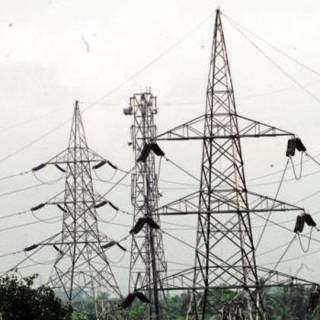Mumbai: Thermal power generation dropped for the third consecutive month, registering a 19% fall in October. Monthly generation numbers are susceptible to vagaries of the season, especially monsoon when demand cools and thermal power plants undergo maintenance shutdowns.
But the longer duration trends are not encouraging either. Thermal power generation dropped 2% in April-October this year, the first such fall in at least a decade, show data from Central Electricity Authority. Part of the fall can be attributed to healthy rainfall, which apart from reducing temperatures has lowered the agriculture load and boosted hydro power generation. The 16% rise in hydro power generation in April-October is best in at least five years.
Still the fall in thermal power generation is disconcerting. Despite the rise in renewable energy, most of India’s electricity needs are met by thermal power. The fall in generation implies demand deceleration.
According to an industry expert, the growing use of energy efficiency appliances such as LED lights have slowed demand. But much of the fall in generation can be explained by the slowdown in demand from industries, which are large consumers of electricity, the expert added.
“We estimate that energy demand fell ~11% YoY in October 2019, the largest across-the-board fall in the last decade. Peak demand also continues to fall. The steep fall is probably the result of a confluence of factors such as a delayed monsoon retreat, implementation of the payment security mechanism, and continued weakness in industry demand,” analysts at SBICAP Securities Ltd said in a note.
The slowdown in industrial demand can have larger implications for the state electricity boards (SEBs), large buyers of electricity in India. SEBs sell electricity to industrial users at relatively higher tariffs, helping them recoup part of the losses they incur in selling power at subsidized rates for households and agriculture sector.
Not surprisingly, the demand slowdown is making SEBs wary. They are reducing their off-take from electricity producers. Utilization levels at two thermal power plants of JSW Energy Ltd were hit last quarter due to reduced offtake by power distribution companies. Similarly, NTPC Ltd’s latest quarterly results show a fall in utilization levels at its thermal power plants, indicating low offtake from buyers. Renewable energy developers are seeing back-down in power offtake by distribution companies.
Volumes and prices in the spot electricity market are also trending lower. The low demand, if it persists for long, will weigh on the earnings of utility companies. Firms dependent on spot electricity and short-term power markets will be hit the most. Comparatively, NTPC is better placed due to its regulated business model where the company’s power plants are tied-up with long term power purchase agreements and are assured minimum return on equity invested.
Still, the weakening demand from the industrial sector does not bode well for overall financial health of the sector. This is one factor investors need to keep a tab on.
